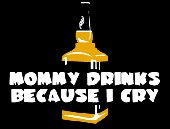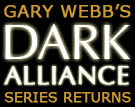Background and Basic Chemistry of Fireworks
NOTICE: TO ALL CONCERNED Certain text files and messages contained on this site deal with activities and devices which would be in violation of various Federal, State, and local laws if actually carried out or constructed. The webmasters of this site do not advocate the breaking of any law. Our text files and message bases are for informational purposes only. We recommend that you contact your local law enforcement officials before undertaking any project based upon any information obtained from this or any other web site. We do not guarantee that any of the information contained on this system is correct, workable, or factual. We are not responsible for, nor do we assume any liability for, damages resulting from the use of any information on this site.
Background
Fireworks effects are the earliest types of explosives known to man. The use of chemicals to produce heat, light, gas, smoke or noise originated several thousand years ago, probably in China or India. "Greek fire", the best-known ancient fireworks, was reported to have been used during the Arab naval siege of Constantinople in 673 AD. It contained a blend of sulphur, organic fuels and saltpetre that generated flames and dense smoke when ignited.
Around the 10th century, adventurous people discovered that with the help of fire, an intimate mixture of potassium nitrate, charcoal and sulphur could produce a very impressive effect. In 1627, Kasper Weindl, at the Royal Mines in Hungary, fired the first commercial blast of black powder, thus introducing the modern high-energy composition.
Fireworks compositions
Fireworks are made up of compositions that burn energetically and, if confined, may explode. They are classed as low explosives, in contrast to the much more powerful high explosives such as dynamites. Fireworks burn or deflagrate; high explosives detonate. Fireworks compositions contain all the oxygen necessary for a chemical reaction (and are therefore very difficult to extinguish in a firefighting situation).
Principal reactants are nitrates, chlorates or perchlorates, along with a combustible material. The nature of the composition and the state of the ingredients, such as particle size, determine the reaction rate, the appearance of the flame, smoke or other fireworks effect, and the noise and flash of the explosion.
Black powder is a versatile mixture. It is used in various granulations as a propelling charge, a source of noise, and a constituent of other compositions or as part of ignition fuses and timing systems. Other compositions produce coloured flames, twinkles, and smoke, and may be either loose or compacted.
When compacted (by being pressed into cubes and pellets, or rolled into spheres) they are called starsand burn over their exposed surfaces to produce a brilliant ball of fire.
Other formulations that contain powdered aluminium or magnesium react violently; resulting in explosions accompanied by a flash and are known as flash or concussion powders. All fireworks compositions are energetic materials. They are therefore DANGEROUS.
In general, fireworks compositions are sensitive to flame, spark, friction, impact and heat. All abhor water in any form and most are rendered completely inert by it. It is worth noting, however, that water may cause spontaneous reactions in a few compositions (e.g., magnesium powders).
Finished products
In contrast, finished products are much less dangerous unless the case is ruptured and the composition leaks out. Fireworks casings are comprised of rolled paper, plastics or paper M!che. Do not tamper with manufactured articles.
Basic chemistry of fireworks Constituents
Mixtures used in fireworks contain:
!" An oxygen donor (oxidizer)
!" One or more fuels that burn with the released oxygen when the oxidizer is heated
!" Other chemicals that serve as binders and create colour, spark or other visual or audible effects
The reaction
!" The heat generated by the reaction between the oxidizer and the fuel causes the other effects to occur
!" All compositions contain their own source of oxygen. Ambient air is not necessary for combustion Fireworks vs. high explosives
!" In general, fireworks deflagrateat a velocity of less than 350 m/s
!" High explosives, in contrast, detonateat velocities ranging from 2000 to 7000 m/s
!"Other comparative velocities:- Light: 299 792 500 m/s - Expansion of a nuclear fission bomb: 1 000 000 m/s - .30-06 rifle cartridge: 825 m/s - Sound: 342 m/s - Commercial aircraft: 135 m/s - Slap shot, baseball pitch: 40 m/s - Vehicles on Trans-Canada highway: 30 m/s
Fireworks: science and art
While the chemistry of fireworks is a science, the development and manufacture of effects is an art. OXYGEN + FUEL HEAT + reaction products (solid, liquid or gas) HEAT Light, colour, sparks, whistle, rapport, smoke, and propulsion IgnitionIgnition occurs when sufficient external energy interacts with the fireworks composition. This energy can be in the form of flame, sparks, high temperature (hot wire), impact, friction, laser beam or plasma shock.
Typical means of igniting fireworks include:
!" Flame/sparks (fuse)
!" Electric current (electric match)
!" Impact (percussion primer)
!" Friction (safety match)
Propagation
Propagation of the reaction occurs when the heat generated by the initial ignition continues in the composition itself (an exothermic reaction). Energy input to fireworks mixture = Broken chemical bonds New chemical bonds form = Energy is released Released energy: !" Lost to surroundings !" Transferred to composition in sufficient quantity to yield a self-propagating reaction Requirements
Fireworks must:
!" Produce the desired effect
!" Be safe to manufacture
!" Be chemically stable (in transportation and storage)
!" Have a low hygroscopicity (tendency to absorb moisture from the air) and toxicity
!" Have a moderate production cost
Basic fireworks principles
Several key factors affect the performance of fireworks compositions. Even if two identical formulas are used to manufacture a fireworks mixture, the effects produced can be quite varied. The reasons for this include:
!"Water/moisture- One of the oldest sayings in this field of fireworks is "Keep your powder dry". Water absorbs heat when it vaporizes. Powder with a high moisture content can be difficult to ignite and may produce a dangerous dud. In come cases, water can sensitize certain compositions such as magnesium powder.
!"Extent of Mixing- A poorly mixed blend of oxidizer and fuel may burn quite slowly (if at all), while the same mixture blended to a high degree of homogeneity will tend to be quite reactive when ignited.
!"Particle Size- Fireworks mixtures made from oxidizers and fuels of small particle size (high surface area) will tend to be considerably more reactive than compositions made from coarser chemicals, even if the same percentages and mixing methods are used.
!"Confinement (through packaging or fireworks mass)- Unlike high explosives, fireworks mixtures show a sharp increase in burn rate when they are confined and ignited. Also, the burn rate of a mixture tends to increase as the surface area of the burning material increases. On ignition, gases and heat are produced; if the gases are held sufficiently long in the vicinity of the burning front, the heat will act on the gases and, if they cannot escape, the pressure increases. This elevates the reaction rate and establishes a vicious circle, whether it is in a paper tube, steel pipe or a quantity of fireworks composition approaching the critical mass.
Commonly used chemicals
Oxidizers Ammonium perchlorate, barium nitrate, potassium chlorate, potassium nitrate, potassium perchlorate and strontium nitrate
Fuels
Elemental: boron, carbon, phosphorus, silicon and sulphur Organic compounds: natural gum, plastics, polymers and starch
Metals: aluminium, magnalium, magnesium and titanium
Special Effects
Noise Effects Report or noise These effects typically contain potassium Effects andperchlorate or nitrate oxidizers and aluminium.
Concussion powders: Whistle effects: These are usually made up of potassium perchlorate, sodium salicylate or sodium benzoate.
Coloured flames and sparks
The show-related applications of fireworks mixtures are infinite but usually involve the production of coloured flames or sparks.
The common colour-and-spark producing chemical groups for fireworks-type reactions are:
Red Strontium salts Green Barium salts Yellow Sodium salts Blue Copper salts White Antimony salts or aluminium powder Amber sparks Charcoal or iron particles Gold sparks Iron or iron-titanium alloy Silver sparks Titanium, aluminium or magnesium
|

